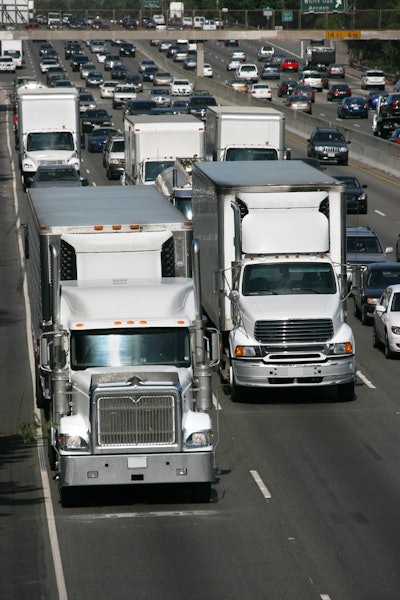
In 1811, history was made as the recently christened New Orleans steamboat flew along at 12mph down the entire stretch of the Ohio River and onto the Mississippi River where following a 2,000-mile run it arrived in New Orleans in a baffling time of 14 days.
Until then, it was current, sails, poles, paddles and even mules and horses, in the case of the Erie Canal, that got vessels up and down America’s waterways delivering people and products to the burgeoning West.
Steam engines eventually made their way into cars and trucks. Affluent folks in the early 20th century could be spotted in Stanley Steamers, Locomobiles (yes, actual name), Toledo steam cars and others that have long since vanished and been replaced almost exclusively by internal combustion engines.
Did the U.S. government mandate the demise of the steam engine? No. The free market opted for less expensive automobiles popularized by Ford’s Model T which was introduced in 1908 and lived a long healthy life until 1927.
Besides proving to be more affordable, internal combustion engines weighed less and required less space than a steam engine with its cumbersome boiler. Yes, there are other interesting points of comparison, such as the longer warm-up periods needed for steam engines, but I’m moving on to the more important point of government intervention.
While American consumers decided the fate of steam-powered vehicles, California attempted to revive the technology a few decades later. Growing concerns over air pollution in the 1960s led to the creation of the California Air Resources Board and subsequent funding efforts from same to produce steam cars and buses. Seen any lately? No, of course you haven’t. Woeful limits of that technology coupled with the massive amounts of capital required for its resurrection convinced wiser minds to move on. See! Don’t give up hope.
Cleaning the air is a noble and just cause if the air actually needs it. Leaving that determination solely up to the government is clearly not the best path forward as CARB recently demonstrated after being confronted with air quality results from the Truck and Engine Manufacturers Association (EMA, the ‘T’ is not used in the acronym).
 In the early 20th century, businesses were betting on steam engines to be the workhorses of the future. California attempted to resurrect the technology in the 1960s in a failed effort to reduce emissions. Foden 5-ton steam wagon shown above. (Photo courtesy of Anthony Appleyard).
In the early 20th century, businesses were betting on steam engines to be the workhorses of the future. California attempted to resurrect the technology in the 1960s in a failed effort to reduce emissions. Foden 5-ton steam wagon shown above. (Photo courtesy of Anthony Appleyard).To their credit, EMA hired air pollution testing firm Ramboll to see if a 20% drop in NOx brought on by a sharp decline in vehicular traffic amid COVID lockdowns would result in an appreciable drop in smog in downtown L.A. It was an example of how the free market can quickly take a great idea to critical fruition. No wallowing around in a bureaucratic haze repeatedly explaining your case at various offices, water coolers and lunch counters hoping to get approval. Just go out and hire a competent lab and let them do the testing. This test has now become even more important since CARB has shown that it can drastically alter various industries on the premise of protecting air that it hasn’t thoroughly examined. CARB unanimously passed its Omnibus Regulations last week despite valid and well-researched concerns from industry stakeholders.
“Ramboll’s supplemental analysis confirms that ozone levels in the SoCAB are, at best, currently unresponsive even to significant 20% reductions in ambient NOx levels, reductions that are well beyond those that could be achieved through implementation of the proposed Low-NOx Regulations,” EMA states in its comments submitted to CARB just days before the agency passed its Heavy-Duty Omnibus Regulations.
EMA goes on to say, “Ramboll’s analysis and findings confirm that the proposed Low-NOx Regulations likely will not be effective in reducing ozone levels in the SoCAB. Just as important, CARB has done nothing to establish any different conclusion. The complete lack of evidence of the actual efficacy of CARB’s proposed Low-NOx Regulations is another factor establishing their invalidity.”
So how about it CARB? Can we see some proof please? Don’t hold your breath.
CARB reports that smog created by NOx can cause health problems and lead to premature death. If millions of trucks present such a threat then certainly it warrants a closer look at downtown L.A., other parts of the South Coast Air Basin and beyond to test and see if recent drops in NOx have in fact led to decreased smog. It isn’t so hard. In fact, government agencies around the world have moved surprisingly fast to observe and track the microscopic and deadly coronavirus. Yet CARB won’t lift a finger to further probe the microscopic world of NOx where people work and live to see if lower levels of NOx have actually led to lower levels of smog. Surely if it could throw money at failed steam engines and God knows what else through the years it could spring for a test and at least evaluate the air that it’s professing to save.









